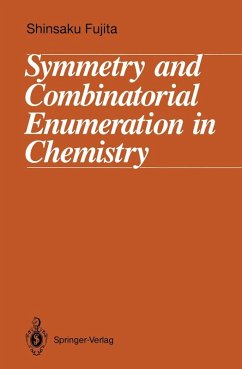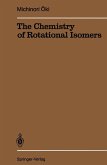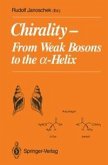Symmetry and Combinatorial Enumeration in Chemistry (eBook, PDF)


Alle Infos zum eBook verschenken

Symmetry and Combinatorial Enumeration in Chemistry (eBook, PDF)
- Format: PDF
- Merkliste
- Auf die Merkliste
- Bewerten Bewerten
- Teilen
- Produkt teilen
- Produkterinnerung
- Produkterinnerung

Hier können Sie sich einloggen

Bitte loggen Sie sich zunächst in Ihr Kundenkonto ein oder registrieren Sie sich bei bücher.de, um das eBook-Abo tolino select nutzen zu können.
This book is written to introduce a new approach to stereochemical problems and to combinatorial enumerations in chemistry. This approach is based on group the ory, but different from conventional ways adopted by most textbooks on chemical group theory. The difference sterns from their starting points: conjugate subgroups and conjugacy classes. The conventional textbooks deal with linear representations and character ta bles of point groups. This fact implies that they lay stress on conjugacy classesj in fact, such group characters are determined for the respective conjugacy classes. This…mehr
- Geräte: PC
- ohne Kopierschutz
- eBook Hilfe
- Größe: 50.12MB
![Stereodirected Synthesis with Organoboranes (eBook, PDF) Stereodirected Synthesis with Organoboranes (eBook, PDF)]() Donald S. MattesonStereodirected Synthesis with Organoboranes (eBook, PDF)40,95 €
Donald S. MattesonStereodirected Synthesis with Organoboranes (eBook, PDF)40,95 €![Stereochemistry - Workbook (eBook, PDF) Stereochemistry - Workbook (eBook, PDF)]() Karl-Heinz HellwichStereochemistry - Workbook (eBook, PDF)30,95 €
Karl-Heinz HellwichStereochemistry - Workbook (eBook, PDF)30,95 €![Stereoselective Heterocyclic Synthesis III (eBook, PDF) Stereoselective Heterocyclic Synthesis III (eBook, PDF)]() Stereoselective Heterocyclic Synthesis III (eBook, PDF)161,95 €
Stereoselective Heterocyclic Synthesis III (eBook, PDF)161,95 €![Clathrate Compounds, Molecular Inclusion Phenomena, and Cyclodextrins (eBook, PDF) Clathrate Compounds, Molecular Inclusion Phenomena, and Cyclodextrins (eBook, PDF)]() Clathrate Compounds, Molecular Inclusion Phenomena, and Cyclodextrins (eBook, PDF)113,95 €
Clathrate Compounds, Molecular Inclusion Phenomena, and Cyclodextrins (eBook, PDF)113,95 €![The Chemistry of Rotational Isomers (eBook, PDF) The Chemistry of Rotational Isomers (eBook, PDF)]() Michinori OkiThe Chemistry of Rotational Isomers (eBook, PDF)40,95 €
Michinori OkiThe Chemistry of Rotational Isomers (eBook, PDF)40,95 €![The Anomeric Effect and Related Stereoelectronic Effects at Oxygen (eBook, PDF) The Anomeric Effect and Related Stereoelectronic Effects at Oxygen (eBook, PDF)]() A. J. KirbyThe Anomeric Effect and Related Stereoelectronic Effects at Oxygen (eBook, PDF)89,95 €
A. J. KirbyThe Anomeric Effect and Related Stereoelectronic Effects at Oxygen (eBook, PDF)89,95 €![Chirality (eBook, PDF) Chirality (eBook, PDF)]() Chirality (eBook, PDF)40,95 €
Chirality (eBook, PDF)40,95 €-
-
-
Dieser Download kann aus rechtlichen Gründen nur mit Rechnungsadresse in A, B, BG, CY, CZ, D, DK, EW, E, FIN, F, GR, HR, H, IRL, I, LT, L, LR, M, NL, PL, P, R, S, SLO, SK ausgeliefert werden.
- Produktdetails
- Verlag: Springer Berlin Heidelberg
- Seitenzahl: 368
- Erscheinungstermin: 6. Dezember 2012
- Englisch
- ISBN-13: 9783642766961
- Artikelnr.: 53100762
- Verlag: Springer Berlin Heidelberg
- Seitenzahl: 368
- Erscheinungstermin: 6. Dezember 2012
- Englisch
- ISBN-13: 9783642766961
- Artikelnr.: 53100762







